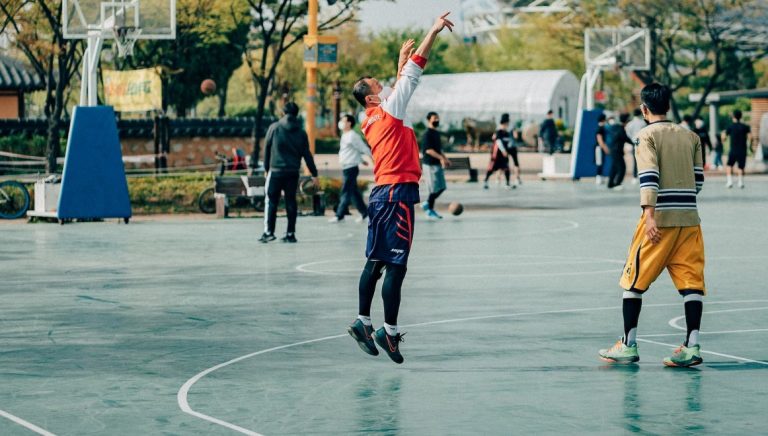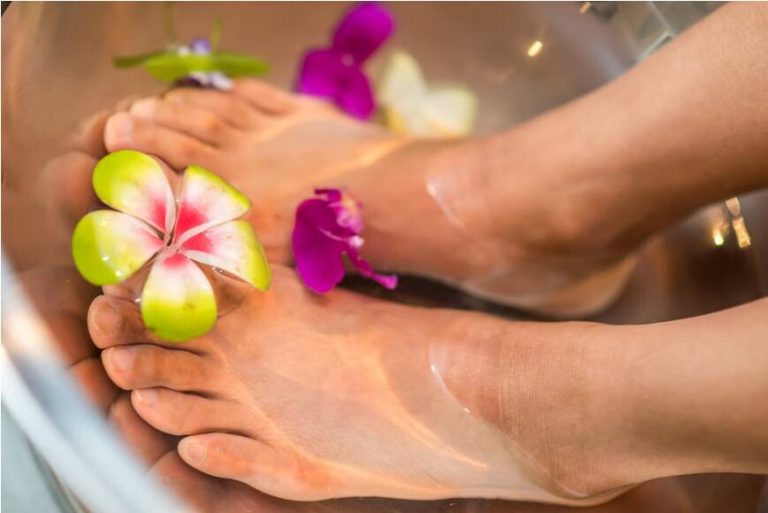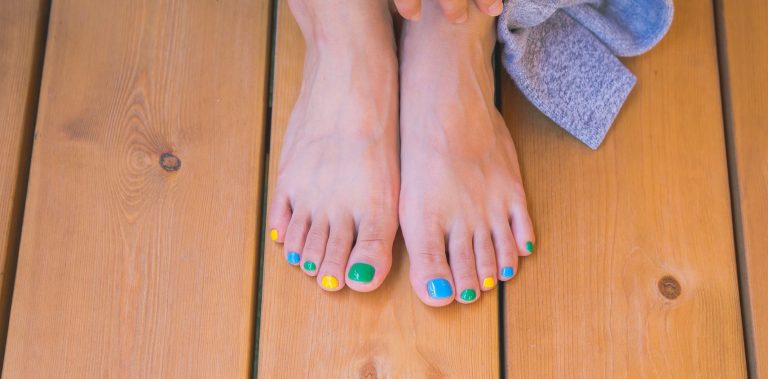Top 10 Best Insoles for Hiking: Ultimate Comfort and Support on the Trail
Introduction
Hiking can be tough on your feet. The rugged terrain, extended distances, and heavy backpack loads put a lot of stress on your feet and legs. Proper insoles for hiking boots or trail shoes are crucial. They provide the right arch support, cushioning, and impact absorption. This keeps your feet comfortable over the miles. The benefits of using good hiking insoles include:
- Arch Support – Insoles with built-in arch support help stabilize and align the foot to prevent overpronation or supination on uneven ground. This takes pressure off the arches and metatarsals to reduce foot fatigue.
- Cushioning – Impact absorbing cushioning in the heel and forefoot protects the foot from repeated shocks. This helps reduce foot soreness and joint pain when carrying loads or descending hills.
- Stability – Contoured insoles that hug the foot provide lateral stability and keep the foot properly aligned when hiking on rocks, roots or angled slopes. This improves balance and reduces the risk of ankle rolls.
- Moisture Wicking – Some hiking insoles have moisture wicking liners that keep the foot drier during stream crossings or sweaty hikes. This helps prevent hotspots and blisters.
- Anti-Odor – Antimicrobial treatments control odor-causing bacteria to keep hiking insoles fresher.
Choosing the right insoles can make a big difference in hiking comfort and safety. The ideal insoles provide arch support, cushioning, and stability specific to your foot type and the demands of your hikes. They also manage moisture.

Types of Insoles
When choosing insoles for hiking, there are a few main types to consider:
- Gel insoles – Gel insoles provide cushioning and shock absorption through gel pads in the heel and forefoot areas. They are soft and conform to the shape of your foot. Gel is good at evenly distributing pressure and reducing impact. These insoles can feel a bit squishy.
- Foam insoles – Foam insoles are made from various materials like latex, polyurethane, or EVA foam. They provide cushioning and support. Dense foam is good for stability, while softer foam provides more shock absorption. Foam tends to be lightweight and comfortable.
- Orthotic insoles – Custom orthotic insoles are medically designed to match the shape of your foot and provide arch support. They are rigid and meant to correct biomechanical issues. Prescription orthotics require a podiatrist fitting. There are also over-the-counter orthotic options.
- Leather/cork insoles – Leather and cork are traditional insole materials that mold to your foot over time. Leather provides stability and structure. Cork soaks up moisture and has anti-bacterial properties. Both materials compact down over use.
The main differences have to do with the level of cushioning, support, conformability, moisture wicking, anti-odor, and weight. Consider the terrain and your specific foot needs when deciding between gel, foam, orthotic, leather or cork insoles.
Arch Type Considerations
The arch of your foot plays an important role in determining the right type of insole for your needs. There are three main arch types: high arches, low arches, and neutral arches.
Those with high arches have little or no arch shape when standing. This puts more pressure on the ball and heel of the foot when walking or hiking. High arches need good cushioning and shock absorbing insoles to prevent pain. Look for insoles with deep heel cups, metatarsal support, and plenty of cushioning under the forefoot. These will distribute weight evenly and relieve pressure points.
People with low or flat arches have little arch height even when not bearing weight. This causes overpronation, meaning the ankles roll inward during each step. Low arches need stability and support in the arch area. Look for insoles with firm arch support to prevent excessive inward rolling of the foot. Some also have built-up medial wedges which also help correct overpronation.
Neutral arches are ideal – these maintain some natural arch shape while weightbearing. Neutral arches can use cushioning or support insoles depending on personal preference. Cushioned insoles provide shock absorption while supportive insoles help maintain optimal foot alignment. Those with neutral arches should choose insoles based on their comfort needs.
Knowing your arch type and choosing the right support or cushioning will make hiking insoles far more comfortable and effective. Don’t just buy generic insoles – get ones tailored for high, low or neutral arches specifically.
Cushioning and Shock Absorption
When you’re hiking for hours over rough terrain, cushioning and shock absorption become critical factors for your foot health and comfort. The repetitive impact on your feet with each step can lead to pain and injuries without proper support.
The best hiking insole materials for cushioning include:
- EVA (ethylene vinyl acetate) foam – This is a lightweight, shock-absorbing material often used in athletic shoes and insoles. It compresses with each step to absorb impact.
- Gel – Gel pads or inserts provide excellent shock absorption. They conform to the shape of the foot and help distribute pressure. Gel is soft and comfortable yet provides support.
- Polyurethane foam – Polyurethane is a durable, resilient foam that springs back to shape and doesn’t compress over time like EVA foam can. It offers lasting cushioning and stability.
- Cork – Natural cork has moisture-wicking properties and molds to the foot shape. It compresses to absorb shock and then springs back. Cork distributes weight evenly across the foot.
The best hiking insole will have ample cushioning under the heel and forefoot. This protects from the jarring forces that travel up the body with each step on the trail. Proper cushioning also reduces foot fatigue so you can keep hiking in comfort over long distances.
Look for insoles with at least 5mm of cushioning under pressure points if you’ll be carrying a heavy pack over challenging terrain. More cushioning brings more shock absorption and comfort. The ultimate cushioning materials mold to the foot, absorb shock repetitively and rebound quickly.
Odor and Moisture Control
One of the biggest complaints when hiking long distances is smelly, sweaty feet. All that pounding on the trail can really heat up your feet, causing sweat to build up inside your boots. This provides the perfect breeding ground for bacteria which causes bad odors. Luckily, moisture wicking and anti-microbial technologies in insoles can help combat this issue.
Some insoles incorporate moisture-wicking fabrics like polyester or nylon. They quickly draw sweat away from your feet. This moisture evaporates through ventilated or perforated areas in the insole. It keeps your feet drier. Brands like Superfeet and Spenco use moisture wicking top layers in many of their insoles.
Other insoles utilize anti-microbial treatments to inhibit the growth of odor-causing bacteria. Common anti-microbial substances include silver ions, activated carbon, and Microban. These substances are embedded in the insole materials. They are also applied as a surface coating. By blocking bacterial growth, anti-microbial technologies can eliminate a main source of foot odor. Popular anti-microbial insoles include Sof Sole Athletic and Timberland PRO Anti-Fatigue.
Some high-end insoles even combine moisture-wicking fabrics. They also include anti-microbial treatments to control odor and moisture. Superfeet GREEN Premium insoles, for example, have a moisture-wicking polyester top layer. It’s treated with Microban, which is an anti-microbial made of zinc. This combo helps keep your feet cool while blocking bacteria growth.
Hikers prone to sweaty, smelly feet should look for insoles with moisture-wicking and anti-microbial technologies. Keeping your feet dry and odor free will help maximize comfort on long days on the trail. Just make sure to give your insoles periodic washings. This removes built-up bacteria and odors over time.
Fit and Sizing
Getting the right fit is crucial when selecting insoles for hiking boots. An ill-fitting insole can lead to blisters, hot spots, and general foot discomfort on the trail. Here are some tips for finding the perfect size and fit:
- Trace your foot on a piece of paper and measure the length and width. Compare these measurements to the sizing chart for the insole brand you’re considering. Sizes vary between manufacturers.
- Consider your sock thickness. Insoles should fit your foot with hiking socks on. Going a half-size up accommodates for swelling on long hikes.
- Opt for an insole that’s trim-to-fit or offers size options. Custom trimming allows tailoring to your exact foot size.
- Try the insoles on with your hiking boots. Walk around the house to test the fit. Your heel should not slip and your toes shouldn’t hit the front of the boot.
- Ensure your foot doesn’t slide side-to-side on the insole. Cradling the sides of the feet prevents friction that leads to blisters.
- Don’t forget about width. Measure the ball of your foot to find the right width option for your foot shape.
- If opting for custom orthotics, work with your podiatrist to capture exact foot measurements. Custom-made aligns perfectly.
With careful sizing and a precision fit, insoles provide maximum comfort and support mile after mile on the trail. Don’t just guess – take the time to measure properly for the ideal hiking insole fit.
10 Best Hiking Insoles
When it comes to the best insoles for hiking, certain brands stand out for their high-quality materials, innovative designs, and durability. Some of the top brands to look for include:
1.Roamingfeet Orthotic Arch Support Insoles
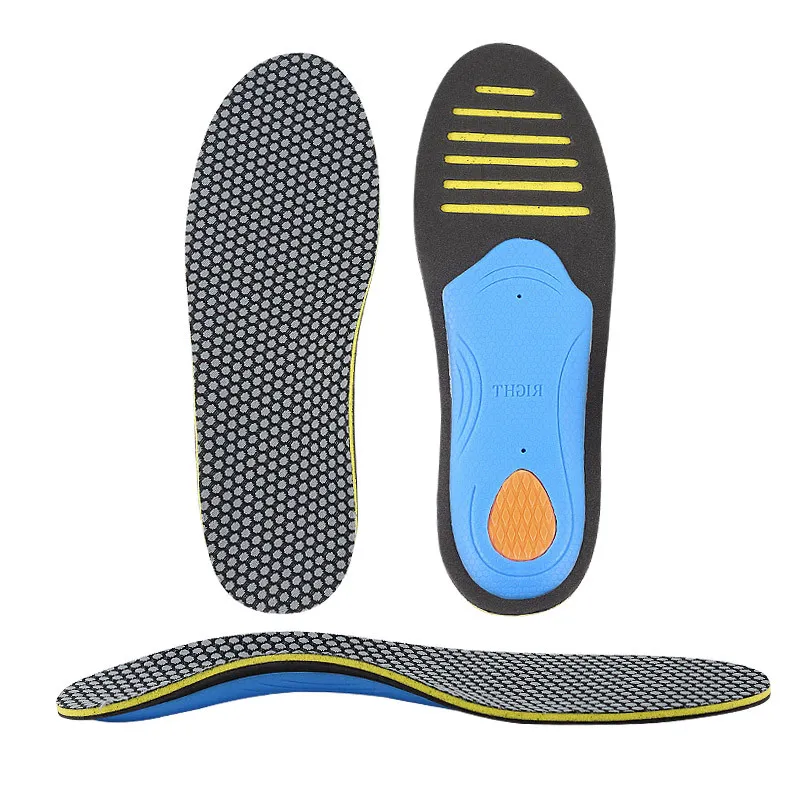
Founded by a podiatrist, Roamingfeet offers premium insoles made in the USA. Roamingfeet hiking insoles come in various cushioning levels and shapes. They accommodate each foot type. Roamingfeet uses durable, high-quality materials. They include closed cell foam, carbon fiber stabilizers, and odor-control coatings. They have options specifically designed for trail running and hiking. They have excellent shock absorption.
Features: Roamingfeet Insoles Insoles offer comfortable support and controlled cushioning, easing the common discomfort of lengthy hikes.
Arch Type Considerations: The design supports neutral and all arch types.
Cushioning and Shock Absorption: High-density EVA foam base provides cushioning and shock absorption.
Odor and Moisture Control: Anti-microbial top fabric reduces heat and friction, keeping feet dry and odor-free.
Fit and Sizing: Can fit most standard hiking boot sizes. They are easy to insert and remove.
2.Superfeet GREEN Insoles
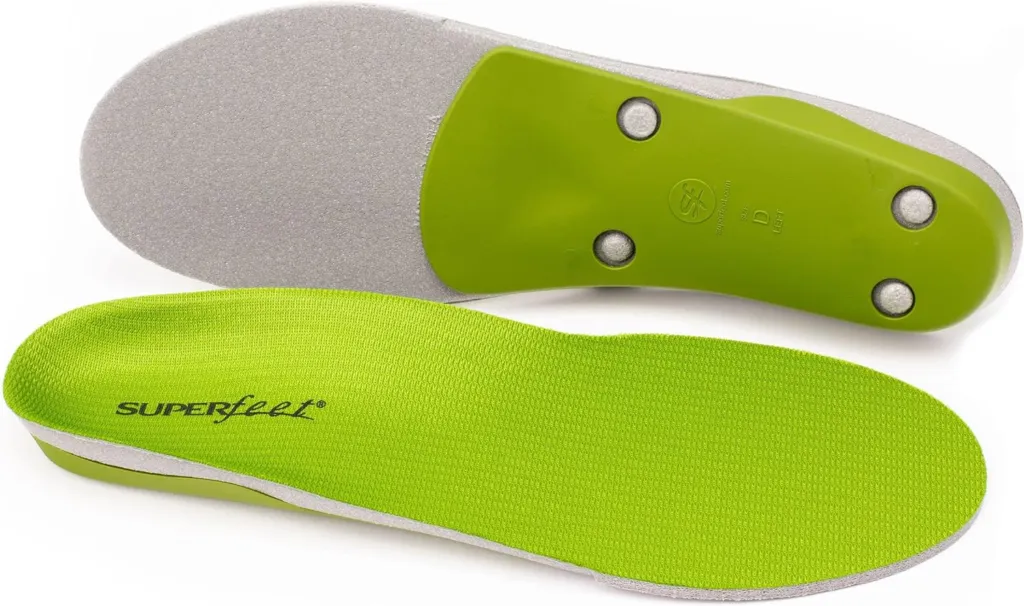
Superfeet insoles are great for hikers with high arches. They provide balanced support to reduce foot strain. The deep heel cup helps absorb shock during long descents. It ensures stability throughout your hike.
Features: These high-density foam insoles, complete with a deep heel cup, provide long-lasting support and stability. They’re exemplary for high arches.
Arch Type Considerations: Ideal for hiking boots with high arches.
Cushioning and Shock Absorption: Excellent cushioning and effective shock absorption during descents.
Odor and Moisture Control: Natural coating eliminates odor and inhibits bacterial growth.
Fit and Sizing: Available in a wide range of sizes. Users suggest purchasing a size up and trimming for a perfect fit.
3.Sof Sole Airr Orthotic Shoe Insole
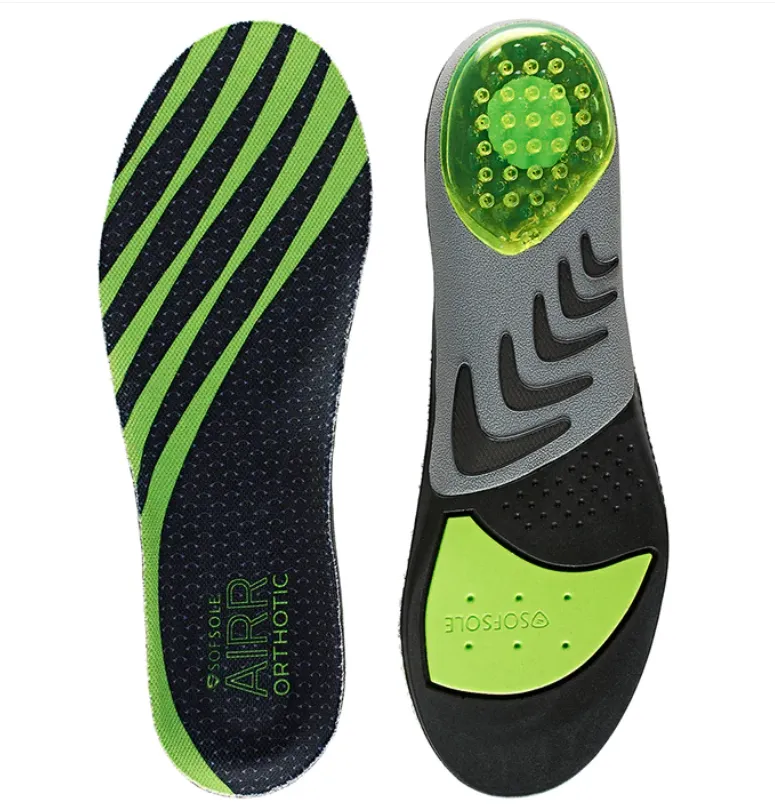
Sole produces quality insoles. They are made with proprietary materials like heat-moldable cork and plantar-grade EVA foam. Their hiking insoles promote alignment and natural foot motion. Sole insoles help control overpronation and come in full-length styles for versatile cushioning. They have a patented met pad design that reduces joint stress.
Features: Combining arch support and shock absorption, this insole is an asset for hiking on uneven terrain.
Arch Type Considerations: Designed to support all arch types.
Cushioning and Shock Absorption: SKYDEX® air-capsules cushion and reduce impact on joints.
Odor and Moisture Control: COOLMAX® fabric cover keeps your feet dry and reduces foot odor.
Fit and Sizing: Available in multiple sizes. Always check the sizing chart before ordering.
4.Spenco Total Support Max Shoe Insoles
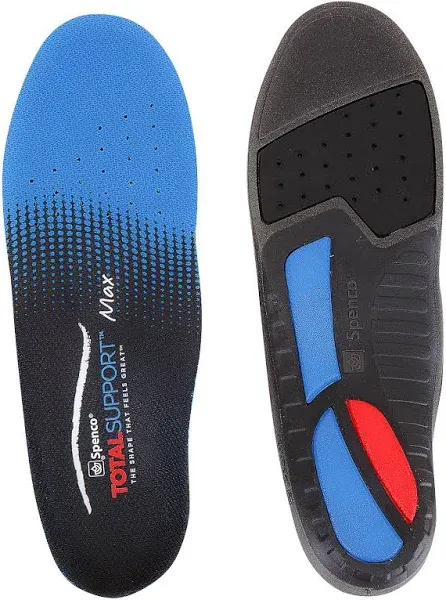
Spenco offers customizable heat-moldable insoles backed by podiatric expertise. Their hiking insoles provide stability, alignment correction, and shock absorption. They have cushioning layers of PORON and EVA foam. Spenco insoles help control overpronation. They also relieve pressure on the ball of the foot.
Features: These insoles are perfect for overpronators, with their motion control features and pressure-reducing design.
Arch Type Considerations: Great for flat to medium arch types.
Cushioning and Shock Absorption: 3-POD™ Modulation System reduces overpronation and the associated discomfort.
Odor and Moisture Control: Treated with SILPURE for preventing blisters and controlling foot odor.
Fit and Sizing: These insoles can be trimmed to fit your hiking shoes.
5.Powerstep Pinnacle Shoe Insoles
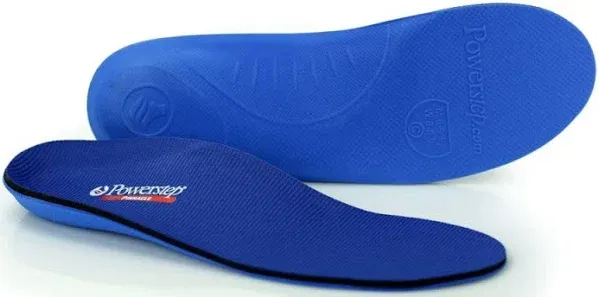
Powerstep is a leading brand for orthotic-grade insoles available over-the-counter. Their hiking insoles alleviate pain in the feet, knees, and lower back. They do this with arch support and heel cradle technology. Powerstep uses dual-layer foam cushioning and anti-microbial top fabric. Their insoles help stabilize the foot and absorb shock with each step.
Features: Employing high-rebound foam, these insoles tackle foot fatigue, boosting comfort for long hikes.
Arch Type Considerations: Fantastic for a variety of arch types due to the contoured design.
Cushioning and Shock Absorption: The high-rebound foam’s excellent cushioning dissipates shock from each step.
Odor and Moisture Control: The insoles have a Cleansport NXT™ organic odor control mechanism.
Fit and Sizing: They can be resized by cutting along the indicated lines.
6.Ironman Sports Plus Insoles
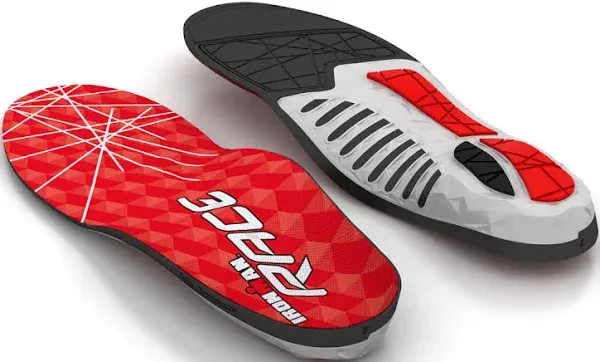
Ironman Sports Plus Insoles absorb shock effectively, making them perfect for rocky trails. Additionally, the adaptable fit eases discomfort caused by ill-fitting hiking boots.
Features:Ironman Sportsinsoles are designed to absorb shock, reduce discomfort, and conform to the foot’s shape for an adaptable fit, making them suitable for rocky trails.
Arch Type Considerations: Suitable for neutral to high arch types.
Cushioning and Shock Absorption: Gel cushioning system effectively absorbs shocks.
Odor and Moisture Control: Breathable material helps control moisture and foot odor.
Fit and Sizing: These are trim-to-fit insoles available in a wide range of sizes.
7.Dr. Scholl’s Hiking Insoles
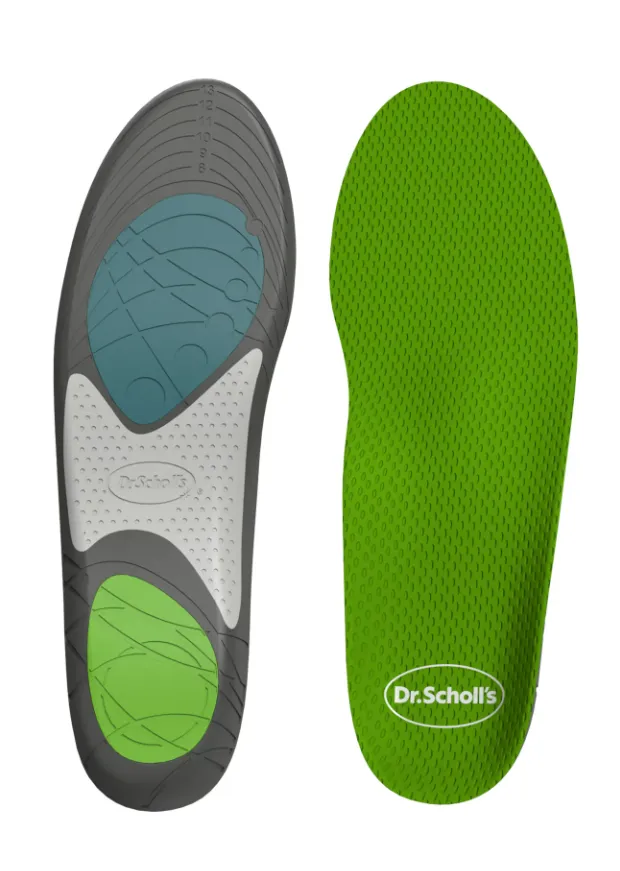
The Massaging Gel technology reduces muscle strain. The Arch Guard technology provides added support to flat feet. This means hikers can enjoy a comfortable hike without bothersome aches and pains.
Features: With Massaging Gel and Arch Guard technology, these insoles provide shock absorption and extra arch support, offering much-needed comfort for hikers.
Arch Type Considerations: Great for low arches or flat feet.
Cushioning and Shock Absorption: Its Massaging Gel technology offers excellent shock absorption.
Odor and Moisture Control: Breathable material keeps feet dry.
Fit and Sizing: Available in various sizes, suggested to buy a size larger and trim for a perfect fit.
8.Sorbothane Ultra Graphite Arch Insole
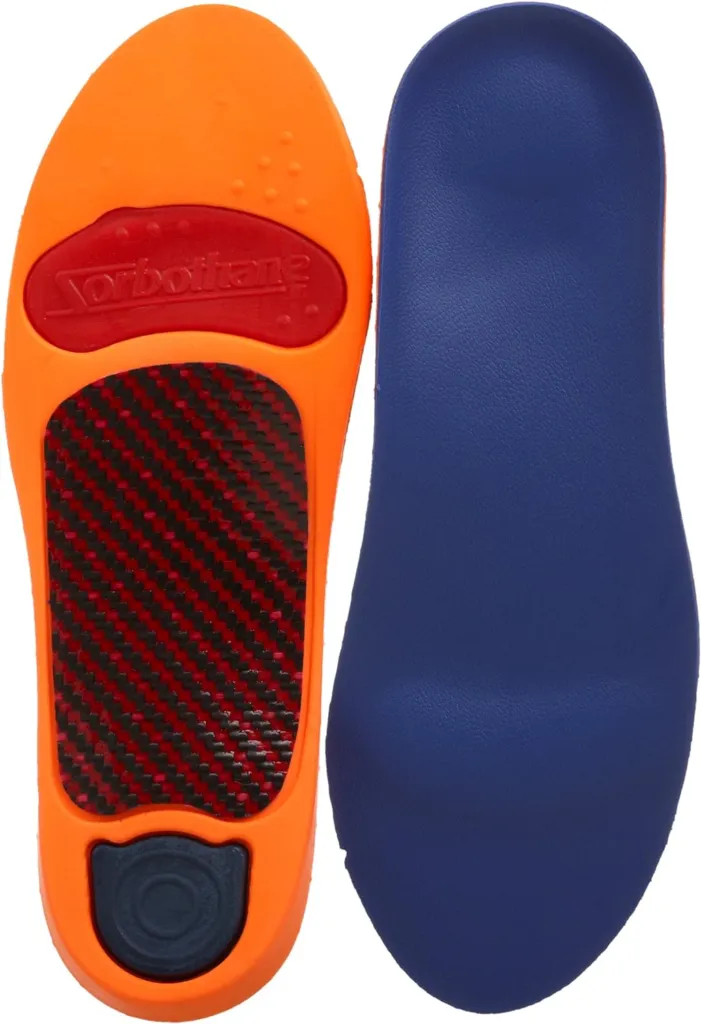
These insoles offer stability and shock absorption. They are perfect for hikers trekking along rocky trails. The unique Sorbothane compound also aids in reducing foot stress
Features: These insoles offer stability and shock absorption, reducing foot stress and providing comfort on rocky trails.
Arch Type Considerations: Ideal for neutral to high arch types.
Cushioning and Shock Absorption: The unique Sorbothane compound provides excellent shock absorption.
Odor and Moisture Control: Features anti-bacterial top cover to reduce odor.
Fit and Sizing: Comes in full sizes and needs to be trimmed for an exact fit.
9.Currex Hike Pro Insoles
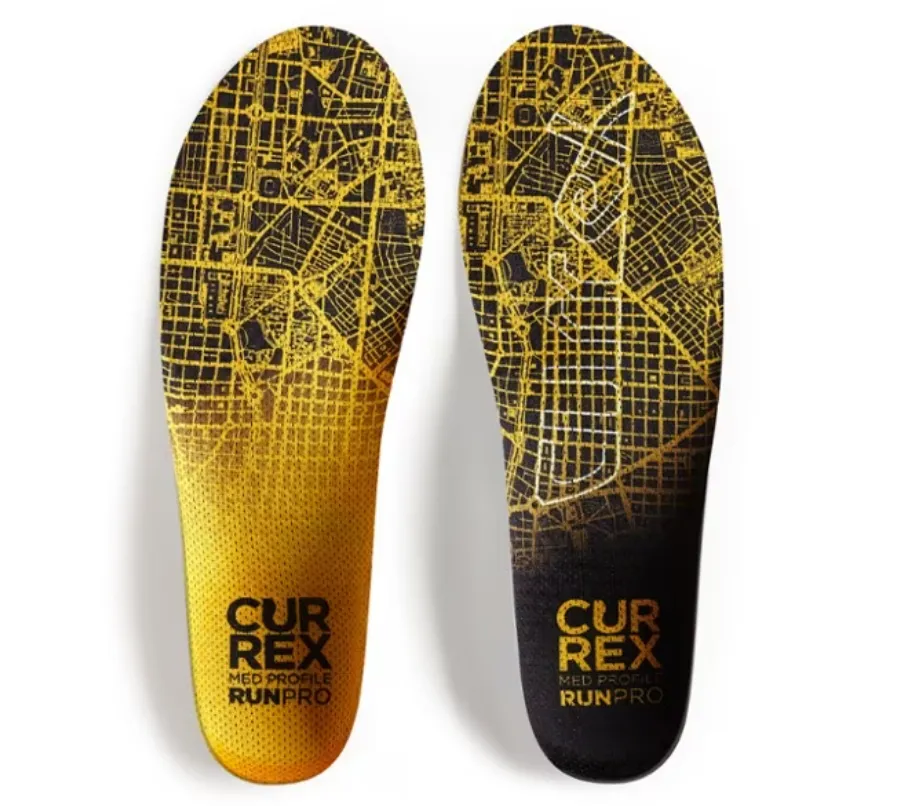
Currex Hike Pro insoles offer a dynamic solution for various foot shapes and issues. They provide comfort and support. Plus, the moisture-absorption feature helps hikers keep their feet dry. This reduces the chance of blisters.
Features: Equipped with 3D DAT technology, these insoles offer dynamic support and comfort. They also excel at moisture absorption, reducing the chance of blisters.
Arch Type Considerations: Can adapt to various foot forms or dysfunctions.
Cushioning and Shock Absorption: Superior cushioning for comfort and support.
Odor and Moisture Control: Fast moisture absorption and desorption keeps feet dry and reduces foot odor.
Fit and Sizing: The insoles come in a range of sizes – refer to the size chart before purchase.
10.Timberland PRO Anti-Fatigue Insoles
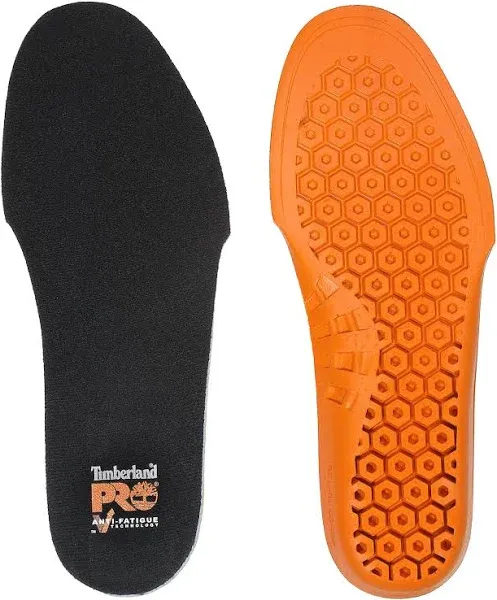
Timberland PRO insoles are ideal for long, strenuous hikes. Their anti-fatigue technology reduces foot stress. The temperature-regulating cover ensures your feet stay cool and avoid overheating.
Features: Timberland PRO insoles are perfect for strenuous hikes. Their anti-fatigue technology reduces foot stress and the temperature-regulating cover ensures comfort.
Arch Type Considerations: Suitable for most arch types.
Cushioning and Shock Absorption: Anti-fatigue technology converts shock into energy, reducing fatigue.
Odor and Moisture Control: The top cover regulates temperature, aiding in moisture control.
Fit and Sizing: These are available in a wide size range. May need to trim for a perfect fit.
The top hiking insole brands use advanced materials and technology. They promote proper alignment and natural foot motion. They also provide shock absorption and comfort over long distances. They work well even with a heavy pack. They offer options to suit different foot types and desired cushioning levels.
Budget vs Premium Options
When it comes to buying insoles for hiking, you’ll find options ranging from basic and affordable to advanced and premium-priced. Deciding what’s right for you depends on your needs and budget.
The main differences between budget and premium insoles are materials, features, and longevity.
Cheaper Basic Insoles
- Cost $10-$30
- Made of basic EVA foam or thin memory foam
- Provide basic cushioning and shock absorption
- Lack moisture wicking capabilities and quick-dry fabrics
- Offer minimal arch support or customization
- Don’t last more than a season or two with heavy use
The main benefits of basic insoles are the low price point and the fact that they provide some additional padding and support. These are good options for hikers on a tight budget or who only hit the trails occasionally.
Advanced Premium Insoles
- Cost $40-$60+
- Made of memory foam, gel, and other technical materials
- Offer excellent cushioning and shock absorbing for joint protection
- Use moisture wicking, antimicrobial technologies to prevent odor and blisters
- Customizable arch support for different foot types
- Durable construction lasts 500+ miles
- Some offer heat moldability for a custom fit
Premium insoles provide maximum comfort and foot protection for hardcore hikers and backpackers. The advanced materials and customizable features make them a worthwhile investment for active outdoorsmen.
When deciding between budget and premium, consider how often you’ll use them and the features that matter most – cushioning, support, odor/moisture control, and durability. Investing in a quality pair of insoles enhances performance and prevents injury if hiking is a passion. Otherwise, a basic pair gets the job done.
Care and Maintenance
Taking proper care of your hiking insoles helps extend their lifespan. Here are some tips:
- Clean insoles regularly by removing them from your boots and washing with mild soap and warm water. Let them air dry completely before putting them back in your boots.
- Use shoe deodorizing sprays or baking soda to help remove odors from used insoles. Rinse thoroughly after applying.
- Replace insoles once they become overly compressed or worn out. Signs include decreased cushioning and support.
- When not wearing your hiking boots, take out the insoles so they can fully dry and retain their shape.
- Store unused insoles in a cool, dry place out of direct sunlight. Don’t leave them where they’ll be compressed under heavy objects.
- Consider having two pairs of insoles and rotating their use. This gives each pair more time to recover between wearings.
- Don’t put insoles in the washing machine or dryer, as high heat can damage them.
- When trying on new hiking boots, bring along your orthotic insoles to test the fit with them inside.
Following these care tips will help your hiking insoles provide comfort and support mile after mile on the trail. Proper maintenance makes them last longer too!
Conclusion
The right insoles can make all the difference. This is especially true when hiking long distances with a heavy backpack. They reduce foot fatigue, blisters, and pain. This is done by providing proper arch support. Additionally, the shoe provides cushioning, shock absorption, moisture wicking, and odor control. This allows you to hike further. You can focus on enjoying the natural beauty around you, rather than your aching feet.
When choosing insoles for hiking, match the arch type to your own feet. This ensures a comfortable and supportive fit. Prioritize cushioning and shock absorption in the heel and forefoot. This will protect from impact. Breathable, moisture-wicking materials will keep your feet dry and blister-free. They are ideal for stream crossings or rain showers. Look for antimicrobial treatments to prevent odors.
Premium insoles have advantages. However, even budget options can provide relief compared to the flat insoles that come standard in most hiking boots and shoes. Take time to find the right pair tailored to your feet and hiking terrain. Replace insoles regularly as cushioning breaks down over miles of use. Happy trails!



